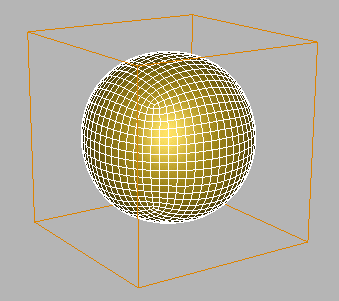3D Animation Workshop: Lesson 85: Superscape Reborn in Web 3D
|
|
Lesson 85 - Superscape Reborn in Web 3D - Part 3
The SeV technology is undoubtedly impressive, and anyone with even a minor interest in Web 3D will want to spend a while cruising through www.superscape.com with a careful and discriminating eye. The rendering quality is excellent and the lighting is pleasing. Anti-aliasing is particularly strong. Anti-aliasing is the name for the method used to smooth out the obvious and rough pixellation that is evident along the edges of objects. This problem is particularly noticeable on curved edges. The following two images rendered in 3D Studio MAX demonstrate the problem and its solution through anti-aliasing.


High-quality anti-aliasing is critical in presenting photorealistic models that appear to be the equivalent of "3D photographs." A photograph in a catalog is a flattering, but (presumably) objective view of the product. But 3D models are approximations created by artists, and consumers have a right to question approximations or interpretations that are presented as "real." This issue may resolve itself with the perfection of technologies (like MetaCreations's MetaFlash) that generate 3D geometry from depth-sensing cameras. But for right now, everything about a model must seem convincingly objective and photographic. Good anti-aliasing keeps a viewer from the feeling that an image is a digital construction. Anti-aliasing of any significant quality is processor-intensive, and can slow down realtime interactive 3D. But the anti-aliased Superscape models seemed to keep their interactive responsiveness, even on an old Pentium system.
The biggest feature in SeV, in my opinion, was its method for handling polygonal subdivision. The fundamental reality of 3D geometry--familiar to all modelers--is that smoothly curving surfaces require a dense polygonal mesh. Thus a pleasing and accurate model of almost any consumer object requires a large geometry file that takes time to download and can be slow to animate or manipulate. In our previous column, we considered MetaStreams' creative approach to this issue, in which a model has an adjustable resolution. A high-poly model can therefore be "streamed" as it downloads, and the viewer sees a cruder version quickly, which builds in resolution as geometry is added. One way or another, however, the full-strength mesh ends up getting downloaded.
SeV adopts as entirely different approach, which is both fascinating and simple. One of the most important methods of modeling organic objects, or those with smoothly curving surfaces generally, is to smooth a cruder mesh using tools that both subdivide the mesh and round it out. This technique is found in all applications. In MAX, the appropriate tool is MeshSmooth. In Lightwave it is Metaform (or MetaNURBS). In Softimage, the command is called Rounding. There are slight differences, but the idea is always the same.
If the smoothing process can be achieved on the client's computer, inside the SeV player plug-in, it becomes possible to ship the viewer only the lower-density mesh. This is the theory that Superscape has successfully implemented as "subdivision surfaces."
To give you the idea of the concept, take a look at an image from 3D Studio MAX. A simple box object, composed of only 8 vertices and shown in wireframe, is MeshSmoothed into a round ball requiring more than 1500 vertices. Think of how much download time is saved if only the crude box is shipped to the player application, and subdivided there.

Paul Beadrow informed me that Superscape currently exports its geometry only from 3D Studio MAX and that their player's smoothing algorithm was designed to closely mimic MAX's MeshSmooth. That way an object ends up smoothing pretty much the same on the SeV player as it does when being modeled in MAX. It's also possible to keep edges sharp by excluding them from the smoothing in MAX, and I gather that this process is carried into the SeV smoothing method.
This local smoothing of meshes is a real smart idea--simple, powerful and effective. I'd be surprised not to see it crop up in competing technologies. It exploits modeling techniques that are widely used and understood, and avoids the enormous technical overhead of NURBS surface approximation or even MetaStream's multi-resolution scheme. Even though we can't use Superscape's technologies ourselves, we can learn from them.
| To Return to Parts 1 and 2, Use Arrow Buttons |
|
Created: Feb. 1, 2000
Revised: Feb. 1, 2000
URL: https://webreference.com/3d/lesson85/part3.html


 Find a programming school near you
Find a programming school near you